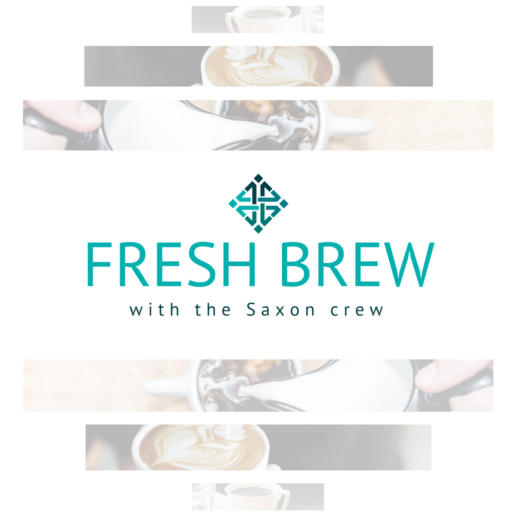How to Help Your Small Workplace Team Succeed
Often many small workplace teams have higher rates of productivity, due to a lesser amount of disruptions. Although there are more projects put onto single people instead of groups, it may not be a bad thing. Read this blog post for helpful tips on how to help your small workplace team succeed.
Are small workplace teams effective? Some savvy business innovators think so. After all, it was Amazon.com founder Jeff Bezos who once said, "If you can't feed a team with two pizzas, it's too large."
Academia agrees. A 2019 Harvard Business Review study leans toward smaller teams. The study suggests that small workplace teams can "disrupt" conventional wisdom and get things done, according to authors Dashan Wang, a management professor at Northwestern University, and James A. Evans, a sociology professor at the University of Chicago.
"Our research suggests that team size fundamentally dictates the nature of work a team is capable of producing, and smaller team size confers certain critical benefits that large teams don't enjoy," Wang and Evans stated.
The study sought to "measure the disruptiveness" of workplace teams using "an established measure of disruption that assesses how much a given work destabilizes its field."
"This told us how the research eclipsed or made us rethink the prior 'state of the art,' setting a valuable new direction for others to follow," Wang and Evans wrote.
Why Small Teams Can Succeed
As Bezos and the Harvard Business Review study authors show, bigger is not necessarily better when it comes to workplace teams.
"Given the right resources, small teams can be incredibly powerful," said Michael Solomon, co-author of Game Changer: How to Be 10x in the Talent Economy (HarperCollins Leadership, 2020) and co-founder of 10x Management, a technology talent recruiting firm in New York City.
Solomon deploys an armed forces analogy to highlight the effectiveness of smaller workplace teams.
"If we think about the military, special ops are usually small units of highly trained, highly synchronized individuals who have prepared extensively, know each other incredibly well and are working toward a common goal," he said. "If companies can create a culture for small teams where there is a shared mission, a safe environment for constructive feedback and trust, there is little that can't be done."
For one project at his company, Solomon said, a team of between three and five people replaced a group of 35 to rebuild a product. "It was the right group of people with the right skills in the right culture, and they were able to literally achieve 10 times the result" of the larger team.
While smaller, more-nimble teams are commonplace at small businesses and startups with tight budgets, the concept can work at any company.
"Small teams can definitely be competitive against bigger teams, but the strategies are different," said John Doherty, chief executive officer and founder of GetCredo.com, a digital marketing company in Denver. "For instance, bigger teams will often have a lot more meetings and voices at the table, whereas smaller teams tend to motivate around a singular goal and focus. It really depends on what a company wants to achieve."
Getting Results with Smaller Teams: Top Tips
Team-building experts advise managers to consider these tips when building small teams:
Build an "ownership" mindset. Emphasizing ownership in a specific skill set is a great way to build small teams.
"Giving each person on a team an area of ownership helps small teams become more effective," Doherty said. "For example, I own business and marketing, my business partner owns the technology/software side, and we also have specialists on accounts, operations and finance."
Doherty's team uses Front, a business management tool, to steer tasks to the right person. "If something comes into our respective e-mail inboxes that should be handled by someone else, we can easily assign it to them and keep moving forward," he said.
Make accountability non-negotiable. Since fewer staffers are available, holding team members accountable is a must for small workplace teams.
"A smaller workplace team needs a combination of ingredients to succeed," said Deborah Sweeney, CEO of MyCorporation.com, a business startup services provider in Calabasas, Calif.
Sweeney lists several traits she looks for when building smaller, efficient company teams:
- They must own their responsibilities. "Team members must be accountable for their work and for being able to drive assignments and initiatives."
- They should be accessible. "There must be an understanding of how to reach a team member with open communications leading to answers."
- They must be flexible. "Being flexible is important, as things quickly change and each member of a team must be nimble enough to handle those changes."
- They must be creative. "Smaller workplaces have fewer resources and less budget than companies with more money and team members. Creativity allows you to brainstorm ideas with your team that are cost-effective. These ideas may help differentiate your brand [from] an expensive option."
Start planning early. Waiting until the last moment to get an assignment started and accomplished is a non-starter for those managing smaller teams.
"Sometimes, starting late cannot be helped, as some assignments come through with tight deadlines," Sweeney said. "When that happens, it's critical that managers address the new priority with their teams, put a hold on existing work, and divide and conquer to quickly get the item with the most urgency completed."
When possible, managers should also encourage small teams to work ahead. "If they're caught up with one piece of their workload, have them start a piece that has been set aside for later," Sweeney added.
Curb team meetings. "With a smaller staff, I strive to avoid meetings," said Lotus Felix, founder of Flawless Content Shop, a content marketing company in West Palm Beach, Fla. "Conventionally, meetings may appear as the backbone of businesses, but there is so much your team can achieve when you slice down the frequencies of these meetings. At Flawless Content Shop, we have been able to up our monthly output by 175 percent by keeping some days entirely meeting-free."
Felix said having a full day without meetings allows his team to build incredible momentum. "This way, my staff can get fully enveloped in their daily to-do lists," he said.
Give your team flexibility, across the board. Felix strives not to "drown staffers in overbearing professionalism.
"For example, we don't have a strict dress code," he noted. "Personally, I have gone to the office in slippers. I wear ripped jeans on casual days, and most Fridays I Rollerblade to work."
Felix said he views this as "a deliberate attempt to unshackle my small team, giving them more vacuum for creative expression."
Measure performance and value. Focus on how your workplace team adds value using three measures: how they help make money, save money or reduce your company's risk.
"Keep track of your team's accomplishments and, as much as possible, determine the return on investment for your smaller team's contributions to the company," said Terry McDougall, owner of Terry B. McDougall Coaching, in Highland Park, Ill. "When you can demonstrate a positive return on investment, this is generally when C-suite leaders feel confident that increased investment in your team will result in a greater return for the company."
Let go of bad performers. Above all else, don't let underperforming team members stick around, because total team performance can suffer.
"With smaller teams, one bad apple can really destroy the culture of a team," Solomon said. "Believing that you can overlook one underperforming or difficult member of the team may be the biggest mistake managers make in running small teams."
In his book, Game Changer, Solomon talks about workers with a "sabotage impulse" who "avoid responsibility for their own actions and are very quick to blame others. No one is eager to have them around because they never feel safe with someone around ready to blame others for their own mistakes."
Too often, team leaders overlook these behaviors in hopes that the worker will rectify his or her behavior.
"In reality, these types of individuals … can be incredibly destructive for small workplace teams," Solomon said. "It's very important to remove them quickly to avoid an adverse impact on the rest of the team."
SOURCE: O'Connell, B. (29 September 2020) "How to Help Your Small Workplace Team Succeed" (Web Blog Post). Retrieved from https://www.shrm.org/resourcesandtools/hr-topics/people-managers/pages/helping-small-teams-succeed-.aspx
Too much screen time from remote work? These tips can combat uncomfortable eye strain
Sitting behind a desk can cause more than just neck and shoulder pain, it can also cause many eye problems and not just headaches and hazy eyes. Read this blog post for helpful tips.
With much of the workforce working from home, employees are spending more time than ever on digital devices — and it’s been a real headache.
Too much screen time causes eye strain, which often leads to headaches, dry and irritated eyes, and neck and shoulder pain, according to a study by the Vision Council. Light emitted from digital devices can also suppress melatonin levels, preventing a good night’s sleep. To combat the uncomfortable side effects of screen time, optometrists and online retailers are marketing blue light filtering glasses, which claim to reduce or eliminate eye strain by blocking the light that causes it. But do they really work?
“Some people say it’s a hoax, some say it helps — but in my experience, about eight or nine out of 10 patients say they really notice a difference after using blue light lenses,” says Dr. Alina Reznik, an optometrist with the mobile optometrist company, 20/20 Onsite. “I do love these lenses — I’ve seen people feel more comfortable and get better sleep throughout the night.”
Eyes are also exposed to blue light from the sun, but staring at screens for long periods of time is what causes eye fatigue, Reznik says. Blue light filtering glasses and contact lenses are designed to prevent blue light from entering the eye and causing symptoms.
“When blue light enters the eye, it scatters and our eye perceives it as glare and has to work overtime to keep our vision clear and focused,” says Jen Wademan, an optometrist with VSP — the largest vision insurance provider in the U.S. “It’s like a muscle — if you engage that muscle, it fatigues.”
The optometrists say blue light exposure also causes people to stop blinking while using digital devices. Wearing blue light lenses can help prevent that, they say.
“You don’t think about it when it’s happening, but when we’re on our computer or phone, we don’t blink as much,” Wademan says. “Blinking lubricates our eyes, so when we don’t do it as much, our eyes get dry and irritated.”
Wademan and Reznik recommend that employees talk to their optometrist about different options for combatting eye fatigue — even those who don’t need corrective lenses to improve their eyesight. Reznik says employees can find high-quality lenses online, but employees need to do a lot of research to verify their legitimacy.
“When people say blue light lenses don’t work, it’s often because they’re not wearing them long enough, or because they’re using low-quality lenses that aren’t actually blocking the blue light,” Reznik says.
People with 20-20 vision can still use vision benefits to purchase lenses to combat eye fatigue, Reznik and Wademan say.
“There’s so many blue light filters on the market online, but your best option is to have an eye exam to talk about your concerns,” Wademan says. “[Optometrists are] held to higher standards, so you can validate that the lenses are high quality.”
Wademan pointed out that people with perfect eyesight should still visit an eye doctor regularly.
“What we do is more than just vision, we look to make sure your eyes are running efficiently and properly,” Wademan says. “We’re also able to monitor chronic conditions like glaucoma and diabetes through eye exams to address them quickly.”
Reznik and Wademan say blue light exposure is not the only vision concern employees should address during the pandemic. The amount of time people spend looking at their screens without breaks, and the distance between themselves and the monitor, have an impact on vision health too.
“You can actually make yourself near-sighted by not taking breaks to look out the window into the distance,” Reznik says. “Our eyes are like muscles, and muscles need to be engaged in order to work properly.”
In addition to wearing blue light lenses, Reznik and Wademan say employees should practice the 20-20-20 rule: look away from your screen every 20 minutes at something 20 feet away for at least 20 seconds. Computer screens should also be placed at arms’ length to reduce eye strain. But, most importantly, they said employees and their children should have regular appointments with their eye doctor.
“So much of what kids learn is through their eyes, so it’s really important to make sure they’re running efficiently,” Wademan says. “We can’t do much without our eyes, so if you have vision benefits, you should definitely use them.”
SOURCE: Webster, K. (24 September 2020) "Too much screen time from remote work? These tips can combat uncomfortable eye strain" (Web Blog Post). Retrieved from https://www.employeebenefitadviser.com/news/tips-for-combatting-eye-strain-from-too-much-screen-time
HR Professionals Struggle over FMLA Compliance, SHRM Tells the DOL
In addition to the daily struggles that HR Professionals have to resolve, they are faced with many frustrations that have stemmed from the federal Family and Medical Leave Act (FMLA). Read this blog post to learn more.
In a Sept. 15 letter to the U.S. Department of Labor (DOL), the Society for Human Resource Management (SHRM) highlighted many of the challenges and frustrations that confront HR professionals as they comply with the federal Family and Medical Leave Act (FMLA).
"SHRM supports the spirit and intent of the FMLA, and our members are committed to ensuring employees receive the benefits and job security afforded by the act," wrote Emily M. Dickens, SHRM's corporate secretary, chief of staff and head of Government Affairs. "While it has been more than 25 years since FMLA was enacted, SHRM members continue to report challenges in interpreting and administering the FMLA."
The letter, developed with input from SHRM members, was in response to a request for information issued by the DOL's Wage and Hour Division on July 17. The DOL solicited comments and data "to provide a foundation for examining the effectiveness of the current regulations in meeting the statutory objectives of the FMLA."
According to Ada W. Dolph, a partner at Seyfarth Shaw who practices labor and employment law in Chicago, “SHRM’s comments echo what we are hearing from clients in terms of their challenges in implementing FMLA leave, particularly now with the patchwork of additional state and local leave requirements that have emerged as a response to COVID-19."
She added, "Our experience shows that regulatory gray areas add significant costs to the administration of the FMLA and impact the consistency with which the FMLA is applied to employees. We are hopeful that [the DOL] will implement SHRM’s proposed revisions, which provide much-needed clarity for both employers and employees."
Wide-Ranging Challenges
In its comment letter, SHRM addressed several issues its members have reported:
CHALLENGES WITH CONSISTENTLY APPLYING THE REGULATORY DEFINITION OF A SERIOUS HEALTH CONDITION
"Continuing treatment by a health care provider" as currently defined in federal regulations creates uncertainty for SHRM members on how to treat an absence of more than three consecutive days, according to SHRM's letter. "If there is not 'continuing treatment,' then it does not constitute a 'serious health condition' under the regulations," the letter explained. "However, if the employee does receive additional treatment, it's not clear whether these initial three absences are related to a serious health condition."
SHRM pointed out that several members "have suggested increasing the time period of incapacity, indicating they spend a lot of time processing employee certifications for missing four days that they believe more readily falls under sick time or paid time off."
Further guidance, including criteria and examples of when employers may obtain second and third medical opinions, "would be helpful, as many SHRM members reported declining to challenge an employee's certification at all because the conditions under which they may challenge those certifications are unclear or cumbersome," SHRM said.
Members also reported that obtaining documentation from health care providers on the need for employees to take leave to care for a family member with a serious health condition was difficult, and that doctors were often vague about identifying how the employee fits into the caregiving equation.
CHALLENGES WITH INTERMITTENT LEAVE
SHRM members reported that intermittent leave-taking is the most likely FMLA leave to be abused by employees.
"Employees are permitted to take incremental leave in the smallest increment of time the employer pays, as little as .10 of an hour, which members reported allowed employees to use the time to shield tardiness or other attendance issues," the letter read. "SHRM strongly urges [the DOL] to increase the minimum increment of intermittent or reduced schedule leave that is unforeseeable or unscheduled, or for which an employee provides no advance notice." SHRM suggested several alternative approaches.
For instance, the DOL could:
- Require that employees take unforeseeable or unscheduled intermittent or reduced schedule leave in half-day increments, at a minimum.
- Establish a smaller increment, such as two hours, that automatically applies in any instance in which an employee takes unscheduled or unforeseeable intermittent or reduced schedule leave.
Additionally, when an employee takes intermittent or reduced FMLA leave, an employer may transfer an employee to an alternative position. However, under current regulations, employers may only require such a transfer when the leave taken is for "a planned medical treatment for the employee, a family member, or a covered servicemember, including during a period of recovery…."
"Given the potential burden and hardship that intermittent and reduced-schedule leave have on employers, SHRM believes that an employer should be permitted to temporarily transfer an employee on intermittent or reduced-schedule leave to an alternative position, regardless of whether the leave is foreseeable or unforeseeable or whether it is scheduled or unscheduled," SHRM told the DOL.
CHALLENGES REGARDING EMPLOYEES WHO ARE CERTIFIED FOR INTERMITTENT LEAVE FOR CONSECUTIVE YEARS
Employees continue to regularly exhaust and replenish their 12-week FMLA entitlement, based on the rolling 12-month entitlement period, SHRM members reported.
"Combined with the Americans with Disabilities Act Amendments Act requirements to accommodate absences under some circumstances, these unrelenting absences become unreasonable and unduly burdensome to employers," SHRM commented.
Similarly, many SHRM members reported being frustrated that there weren't more mechanisms to challenge potential abuses of intermittent leave (e.g., when employees take every Friday or Monday off).
FRUSTRATION WITH EMPLOYEES NOT PROVIDING SUFFICIENT NOTICE OF THE NEED FOR LEAVE
Many employees provide notice of even foreseeable leaves after the leave has begun, noted SHRM, which recommended that notice of foreseeable leave be required prior to the commencement of leave and not "as soon as practicable."
SHRM also suggested that "a more definitive requirement be imposed so that employees understand clearly that they must provide notice of leave prior to beginning leave," and that "if an employee does not give advance notice, it should be the employee's burden to articulate why it was not practicable to provide such notice prior to the start of the leave. If they are unable to meet this burden, the regulation should permit and specify the consequences."
DIFFICULTIES OBTAINING TIMELY RESPONSES FROM EMPLOYEES AND THEIR PHYSICIANS TO SUPPORT THE REQUESTED LEAVE
If an employee fails to provide sufficient information to demonstrate that he or she may seek FMLA leave, then the employee can be required to provide additional information "to determine whether an absence is potentially FMLA-qualifying," SHRM explained. "However, there is no deadline by which the employee must provide this clarifying information, resulting in extensive, continued delays and continued administrative burdens."
SHRM recommended tightening this time frame to seven days and that the DOL "endeavor to provide firmer and clearer deadlines and notice requirements throughout the regulations."
SHRM members also reported that health-provider fees for completing paperwork often slowed or halted the certification process and asked whether providers' ability to impose these fees could be limited.
New FMLA Forms
Overall, SHRM members expressed satisfaction with recently updated FMLA forms. However, members continue to report that the information received from medical providers is often unclear and that they struggle to determine whether the reported condition constitutes a serious health condition.
The new forms do not account for the possibility that an employee does not qualify for FMLA because the employee doesn't meet the requirement of being unable to perform the functions of his or her job. "As such, we suggest that the medical provider be given the option to indicate that an employee does not meet this requirement," SHRM wrote.
Many members suggested that the DOL allow completion of online forms to speed processing times and reduce the administrative burdens of processing FMLA leave.
Among other issues, SHRM members also reported struggling with how to effectively reconcile FMLA with other leave laws enacted in the wake of the COVID-19 pandemic.
SOURCE: Miller, S. (21 September 2020) "HR Professionals Struggle over FMLA Compliance, SHRM Tells the DOL" (Web Blog Post). Retrieved from https://www.shrm.org/resourcesandtools/hr-topics/benefits/pages/hr-professionals-struggle-over-fmla-compliance-shrm-tells-the-dol.aspx
Pandemic Forces Organizations to Get Creative in Prepping Young Employees for the Workplace
Many are still having to work remotely, and become introduced to a company while not in an office setting. This may be hard for many entry-level beginners, interns, and recent college graduates. Employers are now trying to find ways to creatively prepare young employees for a non-traditional workplace. Read this blog post to learn more.
Pairing remote "buddies" with interns, creating leadership boot camps and hosting virtual presentations with college students are a few of the ways employers are preparing young employees for the workforce at a time when the pandemic has forced many employers to adopt a work-from-home culture.
"This pandemic has necessitated all employers to be agile and adapt to a 'new age' workforce and workplace—namely, a decentralization of employees and ability to work remotely," pointed out David Owens, director of campus recruiting at Addison Group, a national staffing and recruiting firm based in Chicago.
"Prepandemic, the majority of internships and entry-level employment opportunities were in-office or involved a majority of in-person daily responsibilities and tasks. Thankfully, in today's climate, we have the capability and technology to shift these in-person or in-office duties virtually. Leading organizations were already transitioning to a more modern concept of work," he said.
"This has been a hot-button inquiry from new graduates and this incoming generation of talent, many of whom are looking for their future workplace to be flexible and agile. More and more organizations will be tested on their adaptability to offer similar work options."
The pandemic has created a need for more in-depth and strategic partnerships with colleges and universities for recruiting students, Owens noted. Hosting a virtual panel or presentation for students is a better option right now than setting up a booth at a widely attended career fair, he said.
"I also recommend forming strategic partnerships with related student organizations and clubs that have a strong presence on campus. Additionally, be an ally to students, many of whom are stressed-out enough adapting to a hybrid or entirely virtual school year. Offer resume reviews, mock interviews, short-stint internships and networking events. Even if they don't apply for a full-time position, it helps to build brand recognition, and they could even end up applying to work at your organization down the road."
Online Networking
"We've been hosting online network events for individuals who are looking to come into the industry," said Carla Diaz, co-founder of BroadbandSearch, a company with 15 employees who all work remotely. Her company helps clients find the best Internet and TV service.
"Since we have connections within the world of ISPs [Internet service providers] and the like, we thought it would be a great idea to give up-and-coming professionals the chance to meet people within the industry—especially since many networking events were canceled as a result of COVID-19."
The events are not large, she said, but they can help young adults make important connections. Some, for example, have led to internships at Broadband.
'Firsthand Exposure'
Synoptek, a global systems integrator and managed information technology (IT) services provider headquartered in Irvine, Calif., designed DiscoverIT for recent college graduates in the U.S. It is a six-month, highly intensive training in technology, project management, the Information Technology Infrastructure Library, security and leadership. The program includes mentorship and technical and leadership boot camps, according to Danielle Andersen, vice president of global human resources at Synoptek.
The company continued its college recruitment program during the pandemic, hiring six employees during the summer.
"The program gives fresh college graduates firsthand exposure to IT consulting," she said.
And its 12-month mentorship, which pairs mentees with a company business leader at its various sites, has been using Microsoft Teams during the pandemic to meet semimonthly. It's a chance, Andersen said, for mentees "to gain more in-depth knowledge about our business model, polishing their professional image and building overall leadership skills."
The coronavirus outbreak should not be a hindrance for young professionals, said Sonya Schwartz, managing editor at Her Aspiration in the Jackson, Miss., area and founder of Her Norm, a relationship website. Her fully remote company, which employs six workers, hires at least one new graduate per department annually and plans to continue to do so, she said.
"I make sure to expose them to the ins and outs of the company to make them more familiar with the whole working process. There is a specific employee assigned for their virtual training, and chatrooms designated for them are made to ensure that all of their questions or clarifications are answered," Schwartz said.
A senior employee assigned to train a new employee also serves as the new hire's guide for daily tasks.
"Initially, we ask the new grad which part of their career they want to focus on and enhance so that they could undergo training, and, once they have decided, we will assign them to the person who we believe can contribute and can train them well in that field and will also serve as their immediate superior," she said.
Trainees attend meetings with potential clients to learn the importance of effective communication and are assigned minor projects, such as conducting research and minor layout of content. They also are given social media management tasks to develop industry-related skills.
Buddy System
The Expense Reduction Group in Baltimore stresses role modeling as a way to prepare and transition emerging professionals, according to founder and CEO Michael Hammelburger. The company, which opened in 2019, employs four staffers.
"Each new hire is unique; that's why I have implemented a buddy system for them," said Hammelburger, financial consultant for small and midsize businesses.
"We assign each of our newbies a tenured employee they can ask any question about the company to make them feel more comfortable as they adjust to their new workplace." During the first six months of hire, each buddy does a daily Zoom meeting, and there are weekly team meetings that include the buddy's new-hire cohort.
"It also breaks away from the formal onboarding seminars that are dull and boring. During our feedback process, our new hires always mention how easy it became for them to adjust."
SOURCE: Gurchiek, K. (23 September 2020) "Pandemic Forces Organizations to Get Creative in Prepping Young Employees for the Workplace" (Web Blog Post). Retrieved from https://www.shrm.org/resourcesandtools/hr-topics/organizational-and-employee-development/pages/pandemic-forces-organizations-to-get-creative-in-prepping-young-employees-for-the-workplace-.aspx
How the Supreme Court Could Rule on the Affordable Care Act
On Nov. 10, the U.S. Supreme Court will hear arguments on whether the Affordable Care Act (ACA) is constitutional, in whole or in part. The court is expected to rule on the matter before its term ends in June 2021.
Only those justices sitting on the court when the case is heard will vote, and it is not yet known if a new Supreme Court justice will be confirmed when the case is argued. A vacancy on the nine-justice court was created by the death of Justice Ruth Bader Ginsburg on Sept. 18.
In the meantime, "the health care law remains fully in effect during the litigation, including all employer coverage obligations and reporting requirements," said Chatrane Birbal, vice president of public policy at the Society for Human Resource Management.
Complex Case History
The Supreme Court's options for deciding this case are shaped by the complicated history of litigation over the ACA.
The origins of the case go back to 2012, when the court upheld the constitutionality of the ACA's penalty on individuals who lack health coverage—the so-called individual coverage mandate—as a justifiable exercise of Congress' power to tax.
In December 2017, however, President Donald Trump signed into law a tax bill that eliminated the ACA's penalty on individuals who lack health coverage. Afterward, several Republican state attorneys general, led by the state of Texas, filed a lawsuit arguing that the health care statute itself, or at least the parts of the act closely linked to the individual mandate, were no longer valid. Democratic states and the House of Representatives, led by Democrats, stepped in to defend the statute.
In December 2018, a Texas district court struck down the ACA but stayed its ruling pending appeal, concluding that the individual mandate is so connected to the law that Congress would not have passed the ACA without it.
On appeal, in Texas v. United States, a split panel of the 5th U.S. Circuit Court of Appeals deemed that the individual mandate was unconstitutional, but the panel instructed the district court to rehear the matter and "to employ a finer-toothed comb on remand and conduct a more searching inquiry into which provisions of the ACA Congress intended to be inseverable from the mandate."
However, on March 2, 2019, before the district court could carry out the appellate court's directive, the Supreme Court announced it would hear the case in its term beginning in the fall of 2020, blocking the lower courts from taking further action.
5th Circuit Ruling Was Narrowly Focused
When the 5th Circuit instructed the district court to rehear the matter and to focus on those ACA provisions that Congress intended to be "inseverable from the individual mandate," this suggested, legal analysts said, that the appellate court was unlikely to overturn the ACA in full.
"Only the individual mandate was declared unconstitutional, and the portion of the lower court's decision invalidating the rest of the Affordable Care Act [was] vacated," according to an analysis of the appellate ruling by Segal, an HR consultancy. As a result, "plan sponsors know that the entire Affordable Care Act will not be overturned."
Had the case proceeded at the appellate level, the 5th Circuit might have struck down those parts of the law directly related to the individual mandate. The appellate decision noted, for instance, that community rating, which prevents insurers from varying premiums within a geographic area based on age, gender, health status or other factors, might be among the provisions determined to be "inseverable" from the individual mandate, because the increase in revenue to insurers from the mandate was meant to offset the decrease from these restrictions.
The ACA's guaranteed-issue provisions, which ban insurers from rejecting coverage based on a person's pre-existing conditions, might also be inseverable, the appellate decision noted.
Supreme Court's Options
The Supreme Court has the following options when it decides the case, The Washington Post and other sources have reported:
- To dismiss the case on technical grounds, leaving the statute in place. The court could decide, for instance, that Texas and the individual plaintiffs lacked standing to bring the lawsuit.
- To affirmatively uphold the ACA.
- To uphold the statute while finding the individual mandate to be void without its penalty, essentially maintaining the status quo.
- To uphold the statute but void both the individual mandate and other provisions closely linked to the mandate.
- To strike down the law in full, although that option has been viewed as unlikely by legal analysts. Should it happen, however, the effect of the ruling would likely be delayed, giving Congress the opportunity to correct the statute's constitutional defects or to pass a replacement health care law.
According to an analysis by the nonprofit Kaiser Family Foundation, "If the Supreme Court adopts the position that the federal government took during the trial court proceedings and invalidates the individual mandate as well as the protections for people with pre-existing conditions, then federal funding for premium subsidies and the Medicaid expansion would stand, and it would be up to states whether to reinstate the insurance protections."
If that were to happen, Congress also could reinstate protections for people with pre-existing conditions.
Joe Biden, the Democratic presidential nominee, has voiced his support for the ACA, sometimes referred to as Obamacare, pointing out how it safeguards people who might not otherwise qualify for coverage. His campaign website says, "Because of Obamacare, over 100 million people no longer have to worry that an insurance company will deny coverage or charge higher premiums just because they have a pre-existing condition—whether cancer or diabetes or heart disease or a mental health challenge."
President Trump has also pledged to maintain these protections even as his administration supports the lawsuit that seeks to overturn the act. During his acceptance speech for the Republican presidential nomination, Trump said, "We will always, and very strongly, protect patients with pre-existing conditions, and that is a pledge from the entire Republican Party."
In Case of a Tie Vote
"If the case is heard by the current eight justices and results in a 4-4 vote, the justices could reschedule oral argument or delay consideration until [Texas vs. United States] can be reheard by a full Court," wrote Katie Keith, a former research professor at Georgetown University's Center on Health Insurance Reforms and a contributor to the Health Affairs blog. "This might mean Texas would be reheard later in the spring depending on the timing of confirmation."
Alternatively, "the Court could issue a 4-4 ruling, which would maintain the status quo and leaves the appellate decision intact. In this instance, the 5th Circuit's ruling would stand and the case would be remanded back to the district court," she noted.
If that is the outcome, "the ACA would remain in effect while the district court undertook a provision-by-provision severability analysis," Keith noted. "The litigation would continue for years as we await a new district court decision, another appeal to the 5th Circuit, and most likely a return to the Supreme Court."
|
Thinking Ahead "Employers will be wise to give some thought to how they might react to different outcomes, Mercer, an HR consultancy, advised. "For example, if some common provisions eliminated by the ACA like annual/lifetime dollar limits on essential health benefits, ending dependent coverage at age 19/23, or the previously mentioned pre-existing condition exclusions were permitted again, would an employer reshape their plan design to curb costs? If the employer 'play-or-pay' mandate (the 30-hour rule) were struck down, would an employer move full-time eligibility back to 40 hours?" Concluded Mercer's consultants, "There is much to consider with these possible ACA changes," should they come to pass. |
SOURCE: Miller, S. (23 September 2020) "How the Supreme Court Could Rule on the Affordable Care Act" (Web Blog Post). Retrieved from https://www.shrm.org/resourcesandtools/hr-topics/benefits/pages/how-the-supreme-court-could-rule-on-the-affordable-care-act.aspx
Viewpoint: How to Minimize the Risk of Retirement Plan Litigation
Many employers have paid millions to settle lawsuits brought to them based on their excessive fees in their retirement plans. It's the employer's responsibility to ensure that retirement plans are created for the most benefit for those who partake in it. Read this blog post to learn more.
What do Estee Lauder and Costco have in common? Both are defending themselves against lawsuits alleging mismanagement of 401(k) accounts, as retirement plan litigation under the Employee Retirement Income Security Act (ERISA) proliferates.
LinkedIn was added to the list in August, when a class-action lawsuit was filed alleging the firm mismanaged its 401(k) plan. And, on Sept. 18, a federal judge rejected a petition by AutoZone Inc. to dismiss allegations of ERISA violations filed by 401(k) plan participants.
In recent years, employers as different as Princeton University and WalMart have paid millions of dollars to settle lawsuits brought by employees alleging excessive fees in their retirement plans.
At the heart of many of these cases are allegations that employers' retirement plan oversight committees tolerated high fees and poor investment performance. Retirement plan committee members are fiduciaries who, under ERISA, are responsible for ensuring that the plan operates in the best interest of its participants.
Attracting Lawsuits
Companies settling ERISA lawsuits are typically accused of failing to pay adequate attention to the retirement plan, such as by failing to remove or replace poor or overly expensive investment choices and allowing vendors to charge above-market fees. The old adage that an ounce of prevention is worth a pound of cure is relevant here.
Law firms are combing through ERISA plan annual filings to identify worthwhile 401(k) targets, looking for expensive or poorly performing investments and high recordkeeping costs. ERISA complaints now include tables and charts comparing a targeted plan's investment performance and expenses with average or best-available practices, to persuade courts that a trial is in order.
Law firms comb through ERISA plan filings to identify worthwhile targets.
Adopting Best Practices
Plan sponsors can't completely eliminate the risk that they will be sued by current or former plan participants, but companies can minimize the risk by adopting best practices—such as those listed below—for making plan investment and management decisions.
FORM AN ACTIVE RETIREMENT PLAN OVERSIGHT COMMITTEE.
The committee should include interested employees, including representatives of HR, finance, legal and rank-and-file employees. A well-functioning committee has a range of talents and perspectives to help it make effective decisions.
The committee should operate under a written charter, setting out the responsibilities of the committee and its procedural rules for appointing members, holding meetings, voting, and hiring advisors and experts as needed, for example. The charter need not be overly rigid or specific but should be drafted to reflect how the committee will operate.
PROVIDE PERIODIC FIDUCIARY TRAINING FOR COMMITTEE MEMBERS.
ERISA is complicated, and committee decisions have direct impacts on employees' retirement income. Committee members must act solely in the interest of plan participants and make decisions as a "prudent expert." Ask vendors to have their top technical experts conduct training, and ensure that the training is tailored to plans of your size.
WRITE AND ADOPT AN INVESTMENT POLICY STATEMENT.
While having an investment policy statement (IPS) is not generally a requirement for 401(k) plans, it is an important document as it may help show that the committee acted prudently and in the plan's best interests in evaluating investments. The IPS should include specific language describing the process by which investments are selected, monitored and replaced when necessary.
It is not advisable to list the plan's current investments within the IPS, as this list may change over time and the IPS may not always be consistent with the website your participants visit to manage their accounts.
MINIMIZE INVESTMENT FUND EXPENSES.
Sponsors of 401(k) plans have spent millions of dollars settling allegations that they had overly expensive funds, in many cases retail-share classes rather than institutionally priced investments.
The expense ratios that 401(k) plan participants incur for investing in mutual funds have declined substantially since 2000, reports the Investment Company Institute, a trade association for financial services firms. In 2000, 401(k) plan participants incurred an average expense ratio of 77 basis points (0.77 percent) for investing in equity mutual funds. By 2019, that figure had fallen to 39 basis points (0.39 percent), which is a 49 percent decline.
For plan sponsors of all sizes, it is imperative to document efforts to maintain the lowest possible investment expenses.
COMPARE INVESTMENT PERFORMANCE.
How do your plan's funds compare to similar offerings? There is no shortage of high-performing, low-expense funds to choose from in each investment category. While the retirement committee can't forecast future investment performance, it can determine prudent funds based on their track record.
If investment evaluation isn't your forte, get expert help from an investment adviser that accepts fiduciary responsibility for investment recommendations.
DROP UNDERPERFORMING FUNDS.
If the menu needs to be revamped, just do it. The small inconvenience of explaining to employees why changes are being made is better than responding to document requests arising from litigation for failing to let go of underperforming funds.
MONITOR REVENUE-SHARING.
Many mutual funds share a small portion of their expense ratio fees with plan administrative firms, which may reduce the costs that plan sponsors pay administrative firms for services such as recordkeeping of participants' investments, providing statements and distributing literature. Fund share classes with no revenue-sharing, however, have lower expense ratios and slightly better investment performance.
If revenue-sharing is in place for any fund being offered through the plan, audit it periodically—at least annually—and ensure that it is reducing plan expenses that might otherwise be paid by participants.
PAY VENDORS WITH FLAT-DOLLAR FEES.
All plans should grill their recordkeepers and other vendors on whether they charge the very lowest administrative fees available. When plan sponsors don't pay administrative fees themselves, a best practice is to charge participants a flat recordkeeping fee (perhaps subsidizing small balances) rather than using revenue-sharing funds to pay the recordkeeper a fee based on the percentage of assets in plan accounts.
If plan sponsors engage an investment adviser, it's also preferable to pay them a flat-dollar fee rather than a fee that fluctuates based on plan assets. Advisers should not be thinking about how recommended changes in a fund lineup will affect their pay.
In all circumstances, evaluating fees on a flat-dollar amount or dollars per participant will provide useful comparisons to fees based on a percentage of assets under management in the plan.
MAINTAIN CONSTANT VIGILANCE ON ADMINISTRATIVE FEES.
Recordkeepers and other vendors negotiate best when they perceive that they may lose you as a customer. As a fiduciary, you and your team need to play hardball at times. Don't worry about hurting the feelings of the vendor's personnel—you're the fiduciary with potential liability, they're not. Benchmark your administrative fees and consider issuing a request for proposal (RFP) for administrative services every few years.
Even though plans may not have changed much, vendors have, and they should be able to lower costs or provide additional services.
DOCUMENT YOUR DECISIONS, BUT BE SMART ABOUT IT.
Maintaining good records is a must but understand that any and all plan-related documents can wind up in the hands of class-action attorneys. Meeting minutes and e-mails should be carefully written and demonstrate a prudent process, to avoid casting the plan or committee in a bad light.
GET IT IN WRITING.
Vendor contracts should be negotiated, not rubber-stamped. Keep track of promises made in RFP responses and finalist presentations. A vendor's oral promises should be documented within their service agreement. Insist on performance guarantees so your plan will be compensated for any service lapses.
DON'T ACCEPT FORCED ARBITRATION WITH ANY VENDORS.
Fiduciaries should not sign away their option to use federal courts to resolve conflicts with vendors. Plan sponsors can always choose to arbitrate a dispute, as vendors prefer this. Just don't sign any contracts agreeing to compulsory arbitration of any and all disputes.
PROTECT AGAINST IDENTITY THEFT.
Ensure that hackers don't steal your employees' account balances. Ask recordkeepers about their security practices, experiences in defeating hackers, and resources committed to maintaining strong cybersecurity.
Obtain a written commitment in the service agreement that the vendor will reimburse participants who followed account security guidelines and, through no fault of their own, had their accounts depleted.
Summing Up
There are several things a company can do to protect against 401(k) litigation. Have the retirement plan run by a committee of dedicated, knowledgeable employees. Hire independent expert advisers to help with investments, vendor oversight and training. Make sure that all fees are competitive, using benchmarking and RFPs as needed. Use an objective fund scoring methodology and replace underperforming investments. Document decisions and pay attention to process.
SOURCE: Scott, P. (22 September 2020) "Viewpoint: How to Minimize the Risk of Retirement Plan Litigation" (Web Blog Post). Retrieved from https://www.shrm.org/resourcesandtools/hr-topics/benefits/pages/minimize-risk-of-retirement-plan-litigation.aspx
5 open enrollment communication strategies for your remote workforce
As the employee benefits workforce continues to stay remote in a majority of places, it's important for them to strategize their communication especially as open enrollment season is coming around the corner. Read this blog post for helpful tips.
Even before the COVID-19 pandemic forced many employers to switch from a mostly onsite workforce to a remote or dispersed workforce, employers were faced with effectively and consistently communicating benefits to employees who were located in different locations, whether that meant offices in different cities or countries; work from home employees; employees working in warehouses, factories, and distribution centers; or employees working at different branches of retail or service businesses.
This communication is important because when employees are unaware of what benefits are available or don’t know how to access their benefits, utilization can drop significantly, so neither employees nor employers are getting value from the benefit offerings. In addition, when employees aren’t using or aware of their benefits, satisfaction with employers decline, which can impact both productivity and retention.
The goal is to both effectively and continuously communicate with employees and build awareness and understanding of available benefits, not just during open enrollment, but all year long. Of course, each communication strategy will be shaped by the organization’s culture, but there are several tools that employers should consider including in their benefits communication toolkit.
Diversify your benefits communication tools
Before developing your benefits communications plan, determine how employees prefer to receive this information by surveying them. In most organizations, there will be several different approaches that appeal to employees because of differences in employee ages, locations (office vs. warehouse or delivery truck), and comfort level with technology.
In the past, standard benefits communications were printed materials that were either distributed at work or mailed home. And while this tool is still effective and gives employees something they can use as a reference throughout the year, there are several other tools that employers should consider using to reach their diverse employee audiences.
Dedicated benefits websites and/or mobile apps broaden access to information
Unlike printed materials, with an online benefits site and mobile app employees can access the content wherever they are, whenever they want, and employers can update the information frequently without incurring printing costs. The site can also serve as a convenient way for employees to ask benefits questions, which can be answered by email from an HR team member, a benefits vendor’s support team or for simple, frequently asked questions, by a chatbot.
Email or text?
Employers will most likely need to include both emails and texts in their plans, but these tools may be used in different ways and with different audiences. For example, texts are a good way to reach employees who are younger or more tech savvy as well as those who are on the road a great deal or don’t work at a desk. These messages will be shorter and will focus on prompting employees to take specific actions, such as enrolling in benefits, updating beneficiaries or submitting receipts for reimbursement under an FSA, HSA, or HRA. They can also be used to remind employees about underutilized benefits to drive participation.
Emails can communicate more detailed information and directly link employees to benefits websites and other resources. However, emails should be kept as succinct as possible to ensure that employees are not overwhelmed with information and skip reading the communication.
Open channels for two-way communication
Providing benefits information to employees is only one part of the communication equation. Employees also need frequent opportunities to ask questions and share their thoughts on what they want and need from their benefits plan. That can be harder to make happen for a dispersed workforce, but video-based webinars, town hall meetings and “ask me anything” sessions with members of the benefits team can be effective approaches.
To ensure everyone has access to information regardless of location or job type there should be multiple sessions for different time zones and schedules, and the sessions should be recorded, posted on the company employee site and include the opportunity to email or text in questions for employees who cannot attend a live event.
Try out-of-the-box communication tools to engage employees
In addition to more traditional communication tools, consider trying different formats that make information more digestible and engaging, such as quizzes, polls, short videos, infographics and storytelling. The goal is to keep employees interested in what their benefits offer and what’s new to help them get the most out of their plans.
SOURCE: Varn, M. (14 September 2020) "Views 5 open enrollment communication strategies for your remote workforce" (Web Blog Post). Retrieved from https://www.employeebenefitadviser.com/list/5-open-enrollment-communication-strategies-for-your-remote-workforce
Fresh Brew With Matthew Bosse
Welcome to our brand new segment, Fresh Brew, where we will be exploring the delicious coffees, teas, and snacks of some of our employees!
“You will not see satisfactory achievements if no action is taken to get there.”
Matthew Bosse is a Data Analyst at Saxon Financial Services.
Matthew’s journey to becoming a Data Analyst at Saxon began at Sunspot Pool and Patio during his 4-year, academic career. It taught him the importance of professional communication, as well as how to resolve issues for a customer in the best possible way.
In his off time, Matthew spends it with his Mini Goldendoodle named Jameson and with his close family and friends. He also loves to build model cars, go golfing, playing pickup soccer and building fun projects.


Rounding Third
Matthew enjoys sipping on his favorite brew, Rounding Third, while sitting outside at Madtree, relaxing.

Spicy Balls
Matthew enjoys sipping on a Bud Light and snacking on Spicy Balls at Dana Garden.
U.S. employers eye cutting wasteful drugs worth $6 billion
A group of researchers has found that there are medications that could be less expensive alternatives that could be covered by employers based on the benefits provided to employees. Read this blog post to learn more.
A health plan covering thousands of California teachers stopped paying for a diabetes drug that cost $352 per prescription. In its place, the plan now pays less than $13.
The difference? Instead of getting a 1,000-milligram dose of metformin, members got two 500-milligram pills.
It’s just one example of what some employers call “wasteful drugs,” and a coalition of West Coast employers says there are hundreds more. At a time when U.S. President Donald Trump is pushing to trim drug costs for Medicare by tying them to prices in other countries, the coalition is on a crusade to cut company spending on drugs nationwide by simply noting the cheaper choices already available, drawing the ire of drugmakers.
A guidebook produced by the Pacific Business Group on Health and researchers from Johns Hopkins University identifies 49 medications with less expensive alternatives that could be cut from the lists of drugs covered by employers. The group has pushed its approach to large employers for two years. Now it’s focusing on mid-sized companies at conferences, with webinars and through an online Excel sheet designed to help any company identify savings.
Lauren Vela, senior director of member value at the coalition, said it all comes down to who gains in the end. “There are so many folks making so much money on the existing system that the folks who really know how the system works don’t have an interest in changing it,” Vela said by telephone.
Vela presented at three online conferences this summer, and has at least two scheduled for the early fall, she said.
The medications outlined in the guidebook accounted for more than $6 billion in U.S. retail drug spending in 2019, according to data compiled by Bloomberg from Symphony Health. Drugmakers have long been under attack for how they price medications sold in the U.S., and for their efforts to undermine rules on when their products can be sold generically for less.
On Sunday, just weeks before the presidential election, Trump announced he had signed a presidential order on the “most favored nation” plan, which would try to link Medicare Part B and Part D prices to lower prices paid by other countries. In response, groups representing drugmakers said this could hurt their ability to find and test for new medications, while House Speaker Nancy Pelosi said Trump’s action took “no real action” to lower prices.
Researchers aligned with the Pacific Business Group, meanwhile, have analyzed six months of drug use and more than 2.5 million scripts for 15 large self-insured companies. They found that 6% of all claims were for what the report termed “wasteful drugs.”
In the case of just one, the leukemia drug Gleevec, use of generic imatinib could cut the average wholesale price 96%, a savings of $108.28 per pill, according to the report. The group says hundreds of other drugs could be replaced similarly.
“Generic drugs are an important part of the full spectrum of health-care solutions,” said Julie Masow, a spokeswoman for Novartis, the Swiss-based maker of Gleevec.
But the drug, which lost patent protection in the U.S. in 2016, “will remain on the U.S. market to maximize choice for health-care professionals and patients,” Masow said, “and Novartis plans to continue financial support for eligible patients.”
The Pacific Business Group also calls out therapies that combine two existing, cheaper pills into a more expensive single dose. And they urge removing pricey drugs that offer only small changes for the consumer, such as certain extended-release formulations or different dosage concentrations.
Drugmaker pushback
While the Pacific Business Group’s guidebook is gaining support among companies, PBMs — which administer drug plans — and pharmaceutical companies are pushing back.
Drugmakers are taking issue with characterizing drugs as “wasteful.”
“Decision-making power on what medicines patients should take should rest with doctors,” Katie Koziara, a spokeswoman for the Pharmaceutical Research and Manufacturers of America, said in an email.
Koziara said her group favors reforming the rebate system “to help correct PBMs and payers’ misaligned incentives,” boost transparency and share rebates directly with patients.
A trade group for PBMs, meanwhile, disputed the Pacific Business Group’s guidebook, saying it was based on limited data.
Greg Lopes, a spokesman for the Pharmaceutical Care Management Association, called the reports “dated” and said, “PBMs are the only entity in the supply chain reducing drug costs for consumers.”
Pharmacy benefit managers negotiate with drug manufacturers on behalf of employers, determining which drugs should be covered. But the employers say that the way PBMs’ services are sold makes it tough to tell whether they’re really saving money.
PBMs and consultants will typically present a spreadsheet that shows administrative fees, discount off-list prices, and rebate payments. The rebates flow from drugmakers to PBMs and ultimately back to plan sponsors, like employers or unions.
But Vela says employers often can’t easily tell if PBMs retain a portion of the rebates or other payments that incentivize them to keep expensive drugs on the formulary. “You’re hiring an entity to negotiate on your behalf, and the party with whom they’re negotiating is giving them money you don’t know about,” Vela said.
As the PBM business model has come under more scrutiny, benefit managers have pledged to be more transparent with rebates and pass them back to employers.
After recent mergers, the three largest PBMs are now part of companies that also own health insurers, pharmacies and other medical providers: UnitedHealth Group’s OptumRx; CVS Health Caremark; and Cigna Express Scripts.
None of the three leading PBMs would comment on the guidebook analysis.
The array of discounts and rebates PBMs tout to their clients often obscures the fact that employers are paying for high-priced drugs when lower-cost alternatives exist, according to Thomas Cordeiro, a co-author of the guidebook and president of consultant Integrity Pharmaceutical Advisors.
“Just because you have a high rebate doesn’t mean your cost is going to be low,” Cordeiro said.
SOURCE: Bloomberg News. (14 September 2020) "U.S. employers eye cutting wasteful drugs worth $6 billion" (Web Blog Post). Retrieved from https://www.employeebenefitadviser.com/articles/u-s-employers-eye-cutting-wasteful-drugs-worth-6-billion
Strategies for maintaining employee trust during executive turnovers
While being in the midst of the COVID-19 pandemic, it's important to keep employee trust and confidence intact. As there may be turnovers and layoffs happening with executives, it's key to communicate with employees that their employers are listening. Read this blog post to learn more.
As businesses struggle with the obstacles of maintaining a new workplace normal in the midst of the coronavirus crisis, ambiguity and unpredictability can threaten employee trust and confidence.
Sweeping layoffs across all industries are putting more pressure on that delicate relationship between employers and employees. Employers increasingly must reassure employees about their job security and the stability of the company, and how they respond will have long-term ripple effects on loyalty and potential turnover, experts say.
“A CEO’s exit or a round of layoffs can have a detrimental effect on employee retention and well-being if not addressed properly,” says Laura Hamill, chief science officer and chief people officer at Limeade, an employee experience company. “It’s important to show employees as soon as possible that you are listening, that you understand their concerns, and that you are working to address them.”
Just before the virus took root in the U.S., former Walt Disney CEO Bob Iger unexpectedly stepped down at the end of February. Around the same time, Expedia laid off 12% of its global workforce, which came on the heels of Wayfair’s January layoffs. Online travel agency Booking announced in early April that CEO Glenn Fogel has tested positive for coronavirus but still plans to continue with his responsibilities.
These major changes can create a lot of uncertainty within an organization, leaving HR and senior leadership in charge of keeping the business on track and reducing employee turnover.
“CEO shake ups [and layoffs] can create two disharmonies,” says Dania Shaheen, vice president of people operations at Kazoo, an employee experience platform. “There is always a lot of noise created with things like this, gossip about why someone stepped down. This tends to be very distracting from what the business is actually doing.”
The often abrupt departure of a CEO can also lead to a shift in strategy, Shaheen says. While a CEO’s vision for a company can be a rallying cry within the organization when that changes, it can upset the company culture. But there are steps employers can take to get out ahead of this.
In the case of Disney, Iger has remained on board to insure the strategy he has established remains in place. This can help ensure a smoother transition of power.
“The more transparent [a company is] and the more open they are internally about what’s going on is going to be key,” Shaheen says.
Frequent and open communication is another necessity for employers during times of business tumult, Hamill says. By planning for the worst-case scenario and having a clear communication policy, organizations can address employee concerns, collect feedback, gauge sentiments, and implement change quickly. Employers shouldn’t wait until they have all of the answers buttoned up.
“When a major change occurs, organizations need to put employees first,” Hamill says. “Be transparent with employees and offer two-way communication – ensure that people feel supported. This needs to come from all angles — from leaders, managers, and internal teams like human resources.”
An organization’s culture is only as strong as the example being set by its senior leadership. In response to mass layoffs and financial losses, many CEOs and other executives have decided to take pay cuts or forego their salaries. New Disney CEO Bob Chapek will take a 50% pay cut, while Iger — who remains with the company as executive chairman — will forgo his entire salary.
Dick's Sporting Goods announced that CEO Ed Stack and President Lauren Hobart will forgo their salaries and Marriott CEO Arne Sorenson will not take home any salary for the rest of the year. The rest of the executive team will take a 50% pay cut.
When organizations set an example that you’re focused on protecting your employees, it will instill trust and create a more loyal workforce.
“Culture is absolutely critical for growth and success and you want to make sure that the culture stays steady,” Shaheen says. “You have to make sure you’re continuing to build a very purpose driven culture.”
SOURCE: Schiavo, A. (06 April 2020) "Strategies for maintaining employee trust during executive turnovers" (Web Blog Post). Retrieved from https://www.employeebenefitadviser.com/news/strategies-for-maintaining-employee-trust-during-executive-turnovers













